…or how to save your money and help save the planet too!
Warnings about catastrophic climate change, mass extinctions, and irreversible damage to the environment have become louder and more urgent than ever*. Despite all the warnings, most people will nod their heads and say “yes, we have to do more to save the planet”, but do little or nothing to change their personal habits and consumption of products and resources. Given the choice between short-term personal gratification (“I need that sheet mask to get my skin glowing!”), and saving the planet for future generations, sadly, I think most people will pick their own needs/wants.
Near the end of 2018, I was at the North York Central branch of the Toronto Public Library, talking about the environmental impact of beauty and personal care products. Towards the end of my seminar, I talked about choosing skin care products that could multi-task, as a means of reducing consumption and thus reducing environmental impact. I could not help but notice that many people in the audience leaned forward with intense interest, started taking notes and photos, and I got quite a few questions about it afterwards. It occurred to me that there is really no source of information out there that will tell you how to streamline your skincare regimen while still getting a good result. You certainly won’t hear this advice from cosmetic companies because they just want to sell more products. Environmental groups don’t have much advice to offer – and if they do, they will tell you to buy from a green beauty company, conveniently forgetting the fact that these companies still have to turn a profit and sell products, just like any other.
I think most people want to do the right thing and help the planet but they don’t know how to reduce consumption of beauty/personal care products without sacrificing the perceived benefits (great skin and nice hair!). But everyone wants to save money, right? And how about saving time, which is far more precious? So, without further ado, here are some beauty hacks that will save your time and money…with the excellent side benefit of reducing environmental impact!
Getting the Glow
I think it is safe to say that, when it comes to beauty, the”Holy Grail” for most people is clear skin in the prime of youth that appears smooth and glowing with health. With that given, it is no wonder that the Korean beauty (“K-beauty”) regimen, which features 10 steps (or more!), has been such a huge hit, as it promises to deliver the kind of skin seen on K-pop stars and Korean actors.
Ten steps is the equivalent of a lot of time – spent shopping and trying out products, and then the time spent every day applying each of these products – and a lot of money. If you can save both, why not?!
Getting healthy, glowing skin involves a few factors which don’t come in a jar or bottle:
- Healthy lifestyle habits: the usual boring stuff that everyone knows deep down inside, i.e. eat a balanced diet with lots of fruit & veg, get adequate sleep & rest, and exercise, and avoid (or at least reduce) known bad stuff like stress, smoking, alcohol, recreational drugs, and excessive consumption of sweets and junk food. If you can do all this, you are more than halfway there!
- Only cleansing skin when it’s actually dirty (which may mean only cleansing once or every other day!), and using gentle, fragrance-free products.
- Protecting skin from sun exposure and environmental conditions such as cold, dry wind and air pollution (second-hand smoke, car exhaust, smoke from fires, etc.).
Taking care of yourself as a whole and being gentle with your skin will garner more benefits than a slew of beauty products which will likely do very little!
Of the three factors listed above, probably the easiest one to tackle is the cleansing part. Most of us clean way too much: washing the face twice a day, and showering once or twice daily in hot water, and lathering all over with foaming cleansers. All that cleanser and hot water strip away lipids and proteins that form a major part of the skin’s barrier function, as well as altering the skin’s natural microbiome, which is believed to serve a protective function. Damaging the skin often leads to a whole host of other problems: irritation, rashes, not to mention dried out skin that is more prone to fine lines and other damage. So, my top tip for helping your skin: cut way back on the cleansing and use a mild, unscented product.
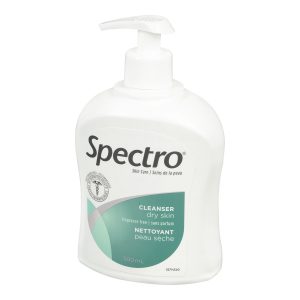
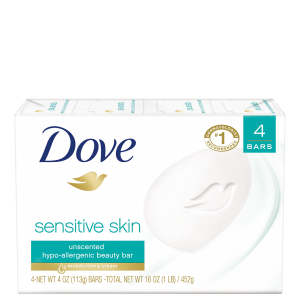
Cleanse only when needed! That may mean cleansing only in the evening, just to remove makeup/sunscreen. If you don’t break a sweat during your daily routine, then there’s no need to lather and scrub twice daily. This may mean having a shower once every other day. What’s more, you do not have to lather up your whole body. For the body, use a small amount of mild, unscented soap only on the areas that tend to accumulate sweat, bacteria and dirt (e.g. underarms, groin, hands and feet), and do an overall rinse-off with water. On the face, this may mean just cleansing in the evening to remove makeup/sunscreen, and in the morning, a drop of cleanser in the T-zone and a quick splash of water to freshen up. In the long run, you will find you use way less product, consume less hot water (lower hydro and water bills!) and your skin will be happier! Good for you, good for the planet!
Besides the factors listed above, there’s one more that starts to become more important as we get older, and that is moisture. As skin ages, it gets thinner, more fragile and dries out faster, especially in dry climates. In women, these changes accelerate following menopause. Drinking 8 glasses of water won’t help keep skin moisturized, but applying a lightweight moisturizer containing humectants such as glycerin, hyaluronic acid and sodium PCA will help. If you choose a really light formulation, it can do double duty as an eye cream. This is a huge money saver, as eye creams are invariably one of the most expensive items in a skincare line and also the item for which you can expect to see the least results. It is also a time saver as this can be applied all over the face and neck.
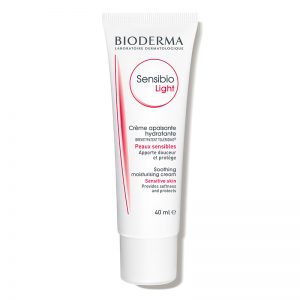
If you are concerned about ageing skin, we can take this principle a step further by choosing a moisturizer that contains an antioxidant.
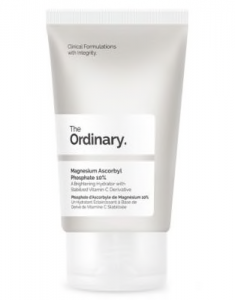
Another possibility is to use a water-based antioxidant serum, and apply moisturizer over top. Bonus points if you can find a serum that combines an antioxidant and humectant! For people with oily skin or those prone to milia formation around the eyes, a simple water-based antioxidant and humectant serum can be used alone to help keep the skin around the eyes hydrated.
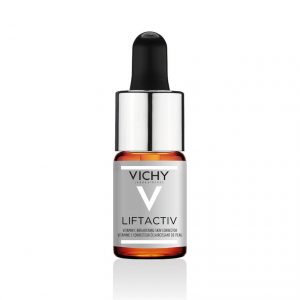
The last step is a sunscreen formulated for sensitive skin, i.e. fragrance-free. Once you find a formulation that you like, it can be applied on any area of the face and body that needs protection from the elements. Apply around the eye area, on hyperpigmented patches that you want to fade, and also the tops of the hands. Besides protecting from sun damage, a sunscreen is effective for keeping fine lines at bay around the eyes and keeping freckle/age spot formation at a minimum. A good tinted mineral sunscreen can often take the place of several makeup products: foundation, tinted moisturizer, BB creams and CC creams. The tint helps to even out skin tone and the mineral content helps to camouflage fine lines, while providing protection from UV damage.
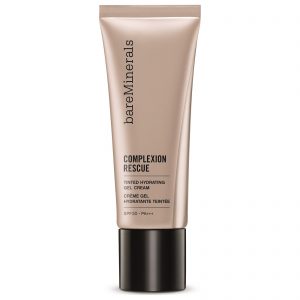
It’s also worth noting that if you cut back on the overly harsh skin care products, cleansing only when necessary with a gentle cleanser, and follow all the other suggestions above (healthy lifestyle habits! sun protection!), chances are your skin is going to start to look pretty good on its own and eventually you won’t need to use much makeup, if at all. Fewer products needed = less time and money spent!
Exfoliants and Pore Reduction
There are many product categories out there which are completely unnecessary and a total waste of money, but the beauty industry, and maybe society and the media, have successfully persuaded people that these things are necessary, especially now that everyone wants to have perfect, seemingly poreless skin for their next Instagram-worthy selfie.
First category of skin care that is unnecessary: toners! Toners became big in the 1980s and are still bobbing around as a supposedly necessary step after cleansing to help close pores. However, pores don’t have musculature to open and close. Their size is dictated by the collagen/elastin structure surrounding them in the dermis, and how much sebum is secreted into the pore by the attached sebaceous gland. People with oilier skin types will typically have pores that appear larger. Picking at skin and squeezing pores breaks down the collagen/elastin support in the dermis and leads to permanently enlarged pores.
Related to toners are the myriad different types of physical exfoliants: scrubbing grains, buffing beads, peeling masks, gadgets, microfiber cloths, etc. These are meant to remove dead skin, unplug pores and make them smaller, and help to keep skin clear and glowing. The thing is, the outermost layer of our skin is about 10 to 40 microns thick and it is held together with protein and lipids. It is definitely not built to withstand a daily (and often twice daily) onslaught of powerful detergents and physical exfoliants. Most exfoliating products are completely unnecessary and may actually harm skin.
About 10 years ago, I am ashamed to admit that I fell for the marketing hoopla and bought a Clarisonic brush…and then discovered it was the skin care equivalent of an ink jet printer: they tell you that the brush head has to be changed every 3 months and each brush head costs about $30! And the used brush head (which is a giant hunk of plastic) ends up in the garbage! Not only that, I stopped using it while testing a low-foam cleanser, and discovered that my skin actually looked better!
A number of companies have started selling synthetic microfiber face cloths and exfoliating mitts, marketing them as being reuseable and therefore better for the environment. In some cases, the microfiber has been impregnated with silver, to make it antimicrobial. Synthetic microfibre is made of polyester and is non-biodegradeable on any feasible time scale. If the fibres have embedded silver, the silver is toxic to microbes and makes the fibres completely non-biodegradeable. Every time a polyester microfibre cloth is used and exposed to water, it sheds thousands of microscopic fibers into the water that cannot be trapped by sewage treatment plants, leading to enormous amounts of microplastic pollution in oceans, lakes and rivers around the world.
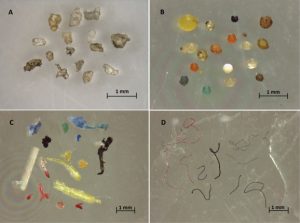
The plastic fibres absorb potentially toxic chemicals in the water, fish consume the plastic, and then we end up eating those fish…you get the picture.
If you feel your skin benefits from physical scrubbing, you can achieve the same or better results as any of the above, with a simple fabric wash cloth made out of a natural fiber. On average, a plain cotton wash cloth costs about $5 CDN, it is gentle on the skin, washable, reusable, and when you have finally worn it out, it is biodegradeable. If you have some basic sewing skills, you can easily whip up a stack of wash cloths from a length of undyed cotton muslin, or if you want to go zero waste, cut up an old cotton t-shirt. If you really want to splurge, you can find silk wash cloths. More importantly, unless you are absolutely determined to scrub your skin raw, it is pretty hard to do major damage to your skin with a cotton wash cloth.
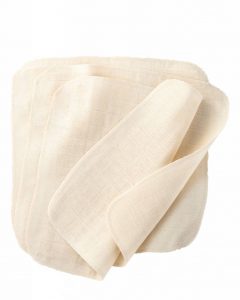
Having said all that, exfoliation still has its place but the key is understanding how to do it right and not to overdo it or scrub (a constant danger as most people tend to treat their skin like kitchen countertops!). For those with oily skin, exfoliation helps to clear away dead skin cells, helping pores appear smaller, and reducing acne breakouts. For this skin type, applying a mild chemical exfoliant can be more effective than scrubbing beads or whatever. Alpha hydroxy acids (AHAs) are useful for straightforward exfoliation. For people prone to acne, there are two active ingredients that are helpful. Benzoyl peroxide does double duty, as the peroxide first kills bacteria, and the degradation product, benzoic acid, helps to exfoliate; the downside is that benzoyl peroxide is quite drying and it can thus be quite irritating. Salicylic acid is another useful ingredient, as it exfoliates and it acts an anti-inflammatory – good for bringing down inflammation and limiting the amount of hyperpigmentation that commonly occurs after a pimple.
Retinoids are also used for exfoliation but must be used with caution as they are medicinal ingredients. Retinoids speed up skin cell turnover rate and prevent sebaceous build-up in pores. Retinoids also promote an increase in collagen production. Over-the-counter products containing retinol are useful for people worried about ageing skin, as it helps to soften fine lines, reduce pore size and slow down the loss of skin density that occurs with age. There are also retinoids available by prescription only which are used to treat severe cases of acne. If you have acne that is not responding to any over-the-counter treatments, talk to your doctor or dermatologist about treatment options.
A few more words on skin care
There are many more product categories that are a waste of time and money, and too many for me to go into right now, so I will finish off for now by saying that in terms of skin care products, the simplest regimen consists of 2 things:
- Gentle, fragrance-free cleanser
- Fragrance-free moisturizer: lightweight lotion for most skin types, a thicker cream for mature skin types (age ~50+).
As suggested earlier, cleanse only when needed. If you are cleansing only when needed and you are using the right cleanser, your skin should feel clean but not taut, and it may turn out that you won’t even need moisturizer! If the air is dry, cover up skin, crank up the humidifier, and consider using a portable radiator instead of central forced air heating to warm up the room you are in. If you have done all that and your skin still feels dry, apply moisturizer sparingly – start with a pea-sized amount and gently pat on (don’t rub!).
***
If you are in the Greater Toronto Area, and you can make it into the city, come see me at the Toronto Public Library! I have several talks booked in the first half of 2020, the full schedule of which is posted in the News section here. If you are interested in learning more about the topic covered above, I will be covering this topic in my talk, “Beauty Hacks”, Monday, April 6, 2020, in the Youth Hub at the Barbara Frum Branch of the Toronto Public Library. Hope to see you there!
***
My next post will elaborate on the “less is more” approach to skin care, but in the meantime, if you want more information about a better way to take of your skin, I urge you to read “Beyond Soap”, by Dr. Sandy Skotnicki and Christopher Shulgan. Dr. Skotnicki is a Toronto-based dermatologist who specializes in allergic skin disease, and a teaching professor at the University of Toronto’s Faculty of Medicine. Check out Dr. Skotnicki’s website for more! (Note: I am not affiliated with Dr. Skotnicki.)
***
*Front page photo credit: Edward Burtynsky, “Clearcut #1, Palm Oil Plantation, Borneo, Malaysia 2016”. If you are wondering about the choice of this photo, huge tracts of rainforests across Southeast Asia and now Africa have been cut down and replaced with palm oil plantations, and the destruction continues apace. Green-branded beauty products that are marketed as “all natural”, “vegan” or “100% plant based” sound like they are both good for you and for the environment, but many contain ingredients derived from palm oil.